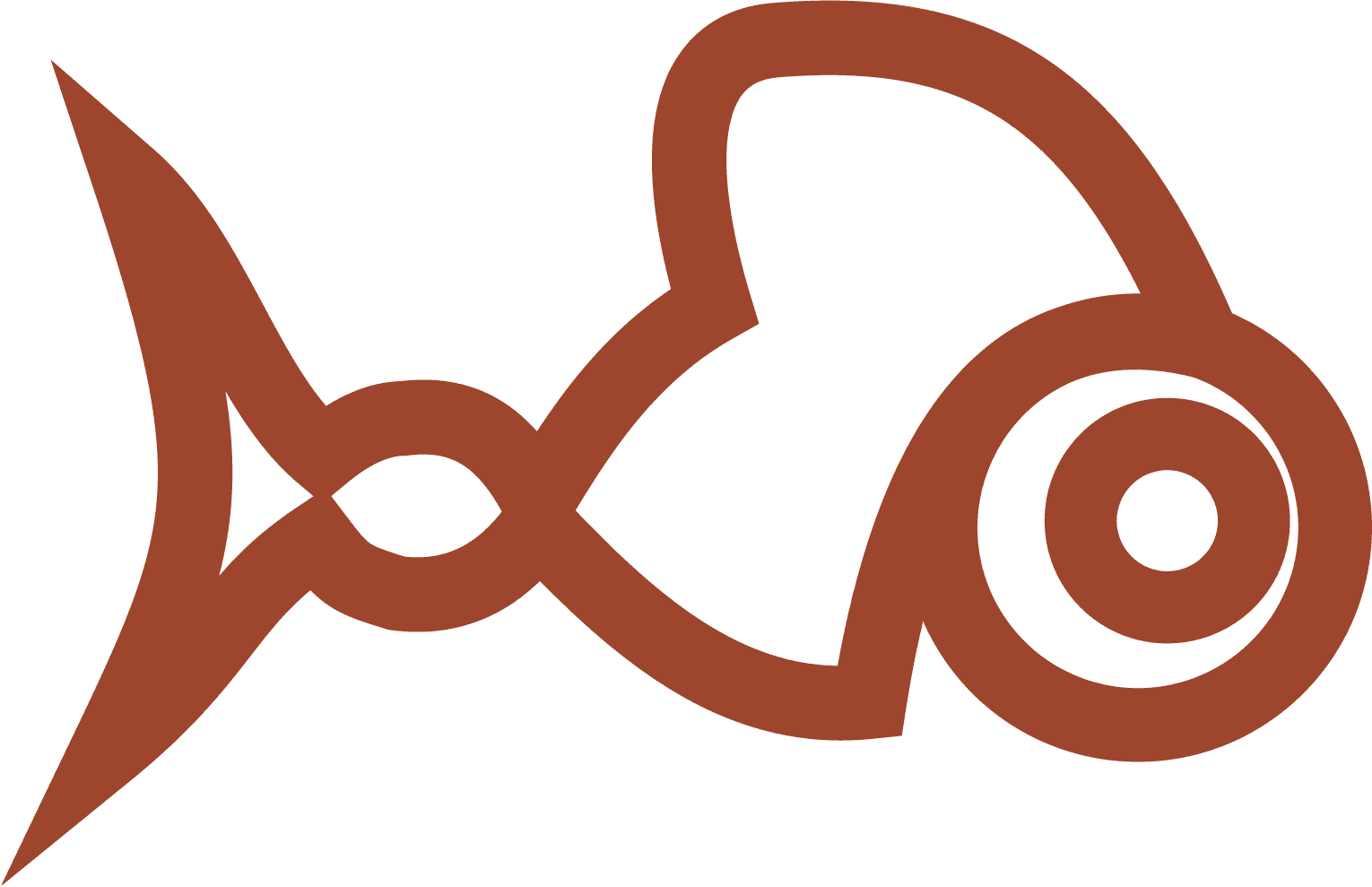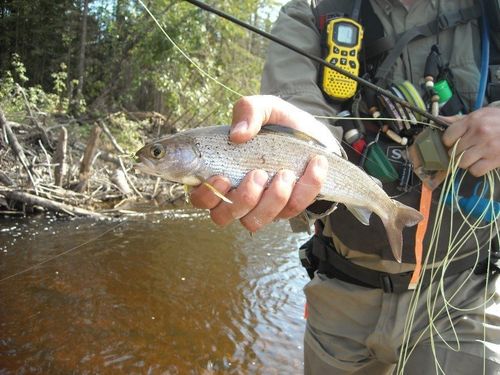
Baby Bar Guac Hopper

This downsized version of the original Bar Guac Hopper (On The Water Fly Fishing Travel July 2016 blog fly) was developed in response to the need for a small green hopper pattern to use on the Bow River. Subsequently, this fly has also worked very well for catching the rainbows, cutthroats and cutbows inhabiting the streams and rivers of southern Alberta and the grayling of northern Alberta.

This grayling was fooled by a Baby Bar Guac Hopper.
Materials
Hook: Tiemco TMC 5263 - size 12
Thread: UTC Ultra 140 – light olive
Body: 2mm avocado green foam and light olive adhesive back furry foam
Wing: EP fibers – 3D sand
Legs: MFC medium round rubber legs - yellow/black/red
Indicator Strip: 2mm foam strip - orange
Adhesive: Krylon spray adhesive and Zap-a-Gap brush on
Other: Hopper/Caddis/Ant foam body cutter – size 12
Hook: Tiemco TMC 5263 - size 12
Thread: UTC Ultra 140 – light olive
Body: 2mm avocado green foam and light olive adhesive back furry foam
Wing: EP fibers – 3D sand
Legs: MFC medium round rubber legs - yellow/black/red
Indicator Strip: 2mm foam strip - orange
Adhesive: Krylon spray adhesive and Zap-a-Gap brush on
Other: Hopper/Caddis/Ant foam body cutter – size 12
Tying Instructions

Step 1.
Pre-make the hopper bodies by spraying the sheet of green 2mm foam with Krylon adhesive and sticking it to the sheet of light olive adhesive back furry foam. Then use a small (size 12) hopper body cutter to stamp out the required number of foam body forms.

Step 2.
Insert the hook in the vise, attach the thread and wrap a 3-layer thread base onto the hook. End with the thread at the mid-shank of the hook.

Step 3.Place a drop of Zap-A-Gap on the rear thread wraps only and spread with bodkin. Then attach the foam body to the hook with 4 or 5 firm wraps of thread.

Step 4.
Advance the thread to just behind the hook eye and apply another thin layer of Zap-A-Gap to the remaining thread wraps.

Step 5.
Bind down the front half of the foam body with 3 or 4 firm wraps.

Step 6.
Attach a 2 ½” long piece of 3D EP fibers, about the diameter of a match stick, to the top of the fly with 2 thread wraps.

Step 7.
Advance the thread back to the rear segment tie in point, over the top of the fly. Then, gently pull back the 3D EP fiber wing.

Step 8.
Bind down the wing with 2 or 3 firm thread wraps. Trim the fibers so that the overall length of the wing extends just past the end of the rear of the foam body.

Step 9.
Prepare a strip of 2 mm orange foam. This strip should be 3/4” long and about the width of the body. Trim the end of the orange indicator strip that will be facing rearward into a pointed shape. The orange foam indicator strip acts as a visual aid to help the angler see the drift of this low riding pattern. It also provides additional floatation for the pattern.

Step 10.
Secure the indicator strip to the top of the fly with 2 firm wraps of thread. Overlap the wing by about 1/8” with the pointed end of the orange foam indicator strip.

Step 11.
Prepare a set of round rubber legs by cutting two individual pieces off the hank, folding them in half, and cutting. This should result in 4 roughly equal lengths round rubber legs.

Step 12.
Bind down the legs on both sides of the rear segment tie in point of the body with 3 or 4 thread wraps.

Step 13.
Lift up the orange foam indicator strip and advance the thread to the front segment. Bring the thread over the top of the fly when you are executing this step.

Step 14.
Bind down the orange foam indicator strip with 2 firm wraps of thread. Trim the excess foam indicator strip leaving about 1/8”.

Step 15.
Bind down the second set of legs on both sides of the front segment tie in point of the body with 3 or 4 thread wraps.

Step 16.
Advance the thread forward to the hook eye and whip finish.

Step 17.
Flip the fly over in the vise so it is belly up and catch all of the legs together between your thumb and forefinger. Trim them off so that they are all roughly equal length.

Step 18.
Trim the front of the foam body into a point.

Step 19.
Carefully apply a small amount of Zap-A-Gap to the exposed thread wraps securing the legs. You do not want to get Zap-A-Gap on the rubber legs or it will cause them to become brittle.
Your Baby Bar Guac Hopper is now complete and you are ready to head out On The Water!



